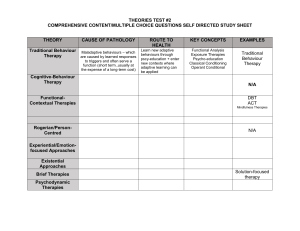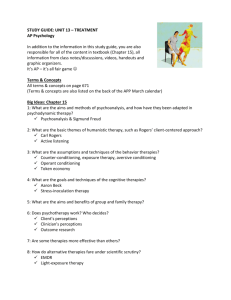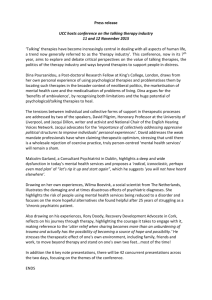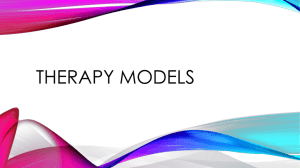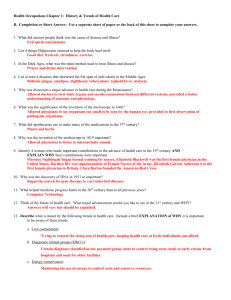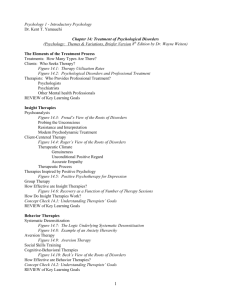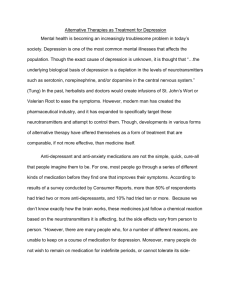The eclectic approach
advertisement
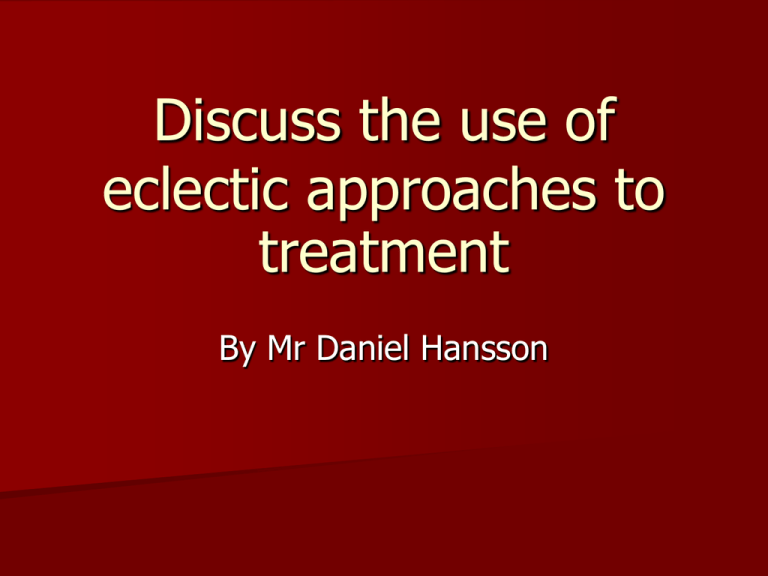
Discuss the use of eclectic approaches to treatment By Mr Daniel Hansson The eclectic approach: An approach that combines two or more techniques for treatment. The treatment is adapted to suit the needs of the individual or group Examples of eclectic approaches Gestalt therapy is often considered as eclectic as it uses many different techniques Combining drug therapy and cognitive therapy for treatment of depression Combining cognitive and behavioral therapy (CBT) for treatment of depression Combining Chinese herbal medicine and antidepressants for treatment of depression Different types of eclectical approaches Simultaneous use: Use of the therapies at the same time Sequential use: Either therapy is used at one time Stage-oriented use: One therapy is used during the critical stage, the other therapies are used at the maintenance stage Supporting studies Jing-Feng & Hong Xue (2002) Peterson (2006) Advantages Is supported by the biopsychosocial & stressvulnerability models Offers a greater flexibility in treatment Treatment can be modified to suit individual needs Less reductionist, more likely to address more facets of a problem Empowers the patient. Patient can choose his treatment (more ethical) Shares the strengths of both therapies Limitations Requires more of the therapist. The therapist needs to be an expert of several therapies Share the weaknesses of both therapies May be unsystematic and unfocused

